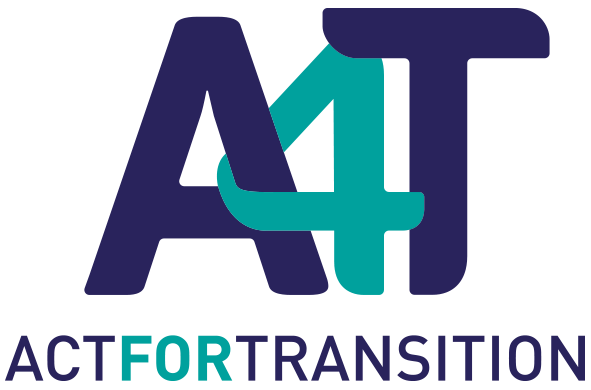Les émissions de gaz à effet de serre sont responsables de l’augmentation de la température moyenne mondiale : au niveau local, les sources de ces émissions peuvent cependant varier considérablement d’un pays à un autre selon ses spécialisations. Les émissions dues à la production d’électricité sont souvent les plus citées, mais représentent en réalité une part relativement faible de l’impact global.
Quelles sont les sources d’émissions les plus importantes en France ? Quels sont les secteurs les plus émetteurs ? Cet article résume les différents postes d’émissions territoriales.

1. Le transport (31%)
Les émissions dues au transport représentent à elles seules environ un tiers des émissions totales. Il s’agit principalement d’émissions de CO2 liées à la combustion de différents carburants lors de déplacements (comme l’essence ou le diesel).
L’utilisation de la voiture a un impact sensiblement plus important que le transport de marchandises. La voiture représente ainsi la moitié des émissions dues au transport (53%) ! Les poids lourds quant-à-eux représentent un quart de l’impact (25%), suivis des véhicules utilitaires (15%), des vols domestiques en avion (4%) et des autres types de transport (maritime national, deux roues, ferroviaire, fluvial etc.).
Les émissions territoriales du secteur n’intègrent pas le transport international de passagers ou de marchandises : ces émissions sont reportées à part (voir partie 7).
2. L’industrie (19%)
L’industrie est le deuxième secteur le plus émetteur. Contrairement au transport, les sous-postes d’émissions qu’il compte sont extrêmement variés.
Les défis auxquels le secteur fait face sont donc très spécifiques au domaine concerné : le Ministère de la Transition Écologique publie ainsi une série de feuilles de route relatives à chaque secteur, la dernière en date au moment de l’écriture de cet article étant celle de la filière Papier-Carton[1], après celles de la chimie (26% des émissions de l’industrie), de la métallurgie (23%) et des matériaux de construction (23%), notamment le ciment.
[1] Publication de la feuille de route de décarbonation de la filière Papier-Carton, mars 2021, Ministère de la Transition Ecologique, https://www.ecologie.gouv.fr/publication-feuille-route-decarbonation-filiere-papier-carton
3. Agriculture (19%)
Sur un pied d’égalité avec l’industrie en termes de volume d’émissions, le secteur agricole traduit lui aussi une réalité complexe.
Il est intéressant de regarder les émissions par types de gaz à effet de serre : là où le CO2 représente la majorité des émissions des autres secteurs, différents gaz interviennent dans les émissions de l’agriculture. Le méthane (CH4) est ainsi responsable de 45% des émissions[2], principalement liées à l’élevage (processus digestif des ruminants) et à la fermentation du lisier. Le protoxyde d’azote (N2O) représente quant à lui 42% des émissions : celles-ci surviennent majoritairement lors de l’épandage d’engrais azotés pour la fertilisation des cultures. Les émissions de CO2 sont donc minoritaires : les émissions liées aux engins agricoles et au chauffage des serres ne représentent que 12% du total.
[2] Rapport 2021 format SECTEN, CITEPA
4. Bâtiment (17%)
Plus homogènes, les émissions du secteur du bâtiment proviennent à 61% des logements et du secteur résidentiel et à 39% des bâtiments du secteur tertiaire.
Les trois usages principaux en termes d’émissions sont le chauffage, l’utilisation d’eau chaude sanitaire et la cuisson (89% des émissions du secteur). Ces usages provoquent en effet des émissions de CO2 notamment dues à la combustion d’énergies fossiles comme le gaz ou le fioul.
5. Transformation d’énergie (10%)
La transformation d’énergie arrive en cinquième position. Et la production d’électricité, souvent prise comme exemple lorsqu’on évoque la décarbonation, ne représente même pas la moitié des émissions du secteur (47%) ! Le reste comporte le raffinage du pétrole (21%), la production de chaleur en particulier quand elle implique des énergies fossiles (9%), et d’autres usages (émissions fugitives de mines ou transformation de bois en charbon de bois par exemple).
6. Déchets (4%)
Les déchets sont souvent mentionnés lorsqu’on parle d’écologie : et pour cause, il s’agit d’un poste particulièrement visible dans notre vie quotidienne. Chaque français produit ainsi environ 568 kg d’ordures ménagères par an[3]. Pourtant, leur traitement ne représente que 4% des émissions totales en France.
Autre élément contre intuitif : ces émissions proviennent majoritairement lors du stockage de déchets (83%), notamment en décharge, loin devant l’incinération (qui peut par ailleurs permettre de récupérer de l’énergie) ou d’autres procédés biologiques (compostages, méthanisation, etc.).
[3] Déchets chiffres-clés, ADEME, 2020, https://www.ademe.fr/sites/default/files/assets/documents/dechets_chiffres_cles_edition_2020_010692.pdf
7. Et le reste ?
Ce panorama serait incomplet sans évoquer de trois autres éléments clefs dans notre impact environnemental : les puits de carbone, les transports internationaux et les émissions importées.
L’utilisation des terres et des forêts et leur changement d’affectation (UTCATF) a ainsi un impact positif. Le secteur permet de séquestrer environ 7% des émissions nationales, notamment grâce à la gestion des forêts. L’artificialisation des sols et la déforestation tirent cependant cet impact vers le bas et limitent le potentiel du secteur.
Les transports internationaux ne sont pas intégrés au périmètre national : ils représentent pourtant 6% du total des émissions territoriales, majoritairement du fait des vols aériens (77% des émissions du transport international).
Enfin, l’ensemble des produits et services importés ont également une empreinte carbone : ils sont associés à des émissions de gaz à effet de serre dans d’autres pays. Si on calcule l’empreinte carbone liée à la consommation en France plutôt que les émissions territoriales, le total augmente de 52% ! Ce chiffre intègre les émissions associées aux importations, mais l’impact des exportations est déduit.

Quel que soit votre secteur d’activité, Act4Transition vous accompagne pour estimer à la fois vos émissions directes et indirectes : contactez-nous pour en savoir plus sur notre accompagnement.





